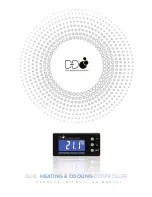
7
General Safety Guidelines for
Wheelchair User Transportation
Wheelchair users should transfer to vehicle seats whenever possible.
•
Wheelchair
•
users should not travel with the wheelchair at an angle or facing sideways
to the direction of travel.
There
•
should be sufficient free space around the wheelchair and user to avoid the
user making contact with other vehicle occupants, unpadded parts of the vehicle,
wheelchair accessories or W.T.O.R.S. anchor points.
Wheelchairs
•
should have the parking brakes applied and their power units switched off
during vehicle movement. Powered wheelchairs should not be left in free wheel mode.
Wheelchairs
•
should not block gangways and exits for other passengers in the vehicle.
A
•
headrest should be provided for a wheelchair user when travelling in a vehicle where
other seated passengers have headrests.
Do
•
not place / hang any additional items onto the wheelchair during transportation
such as shopping bags and holdalls.
Trays
•
should be removed for transportation whenever possible. If it is necessary for a
tray to be used on transportation, then a risk assessment should be done.
Wheelchair Tie Down and Occupant Restraint System
(W.T.O.R.S.)
Secure methods for the safe retention of wheelchairs have been developed and are
•
used on a regular basis to secure wheelchairs during transportation use.
These
•
systems are now commonly referred to as
W.T.O.R.S.
W
heelchair
T
ie down and
O
ccupant
R
estraint
S
ystems
There are many types of W.T.O.R.S. available from various manufacturers (a list of
•
some manufacturers is given on page 9). Refer to your Wheelchair Manufacturers
Handbook for details of their particular recommendations.
Please
•
note that all lap /chest belts and harnesses supplied with the seating system
are not
sufficient for occupant restraint when the equipment is used on a moving
vehicle and additional Occupant Restraint is required.









































